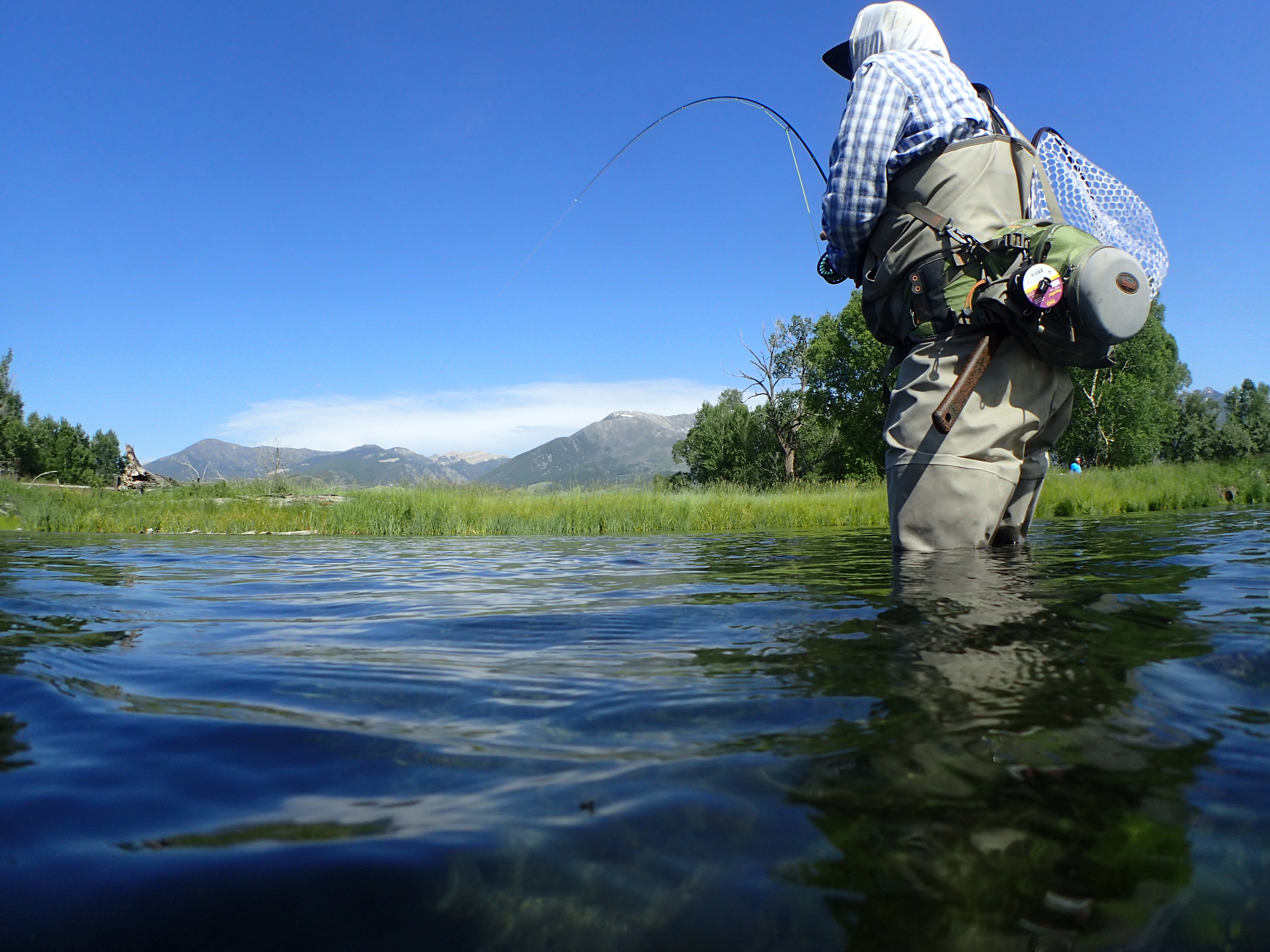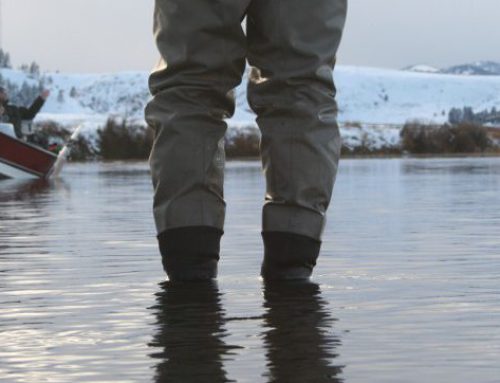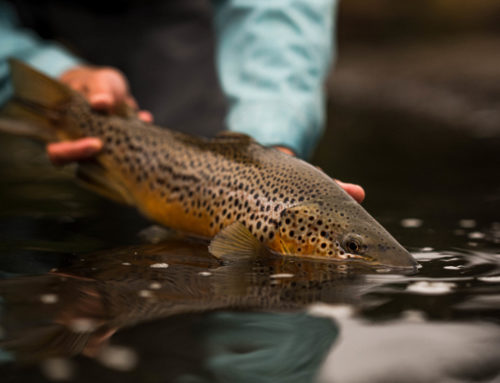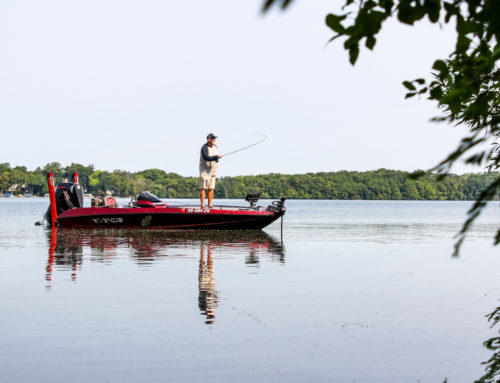For the majority of anglers, walk-wade fishing is the main method of hitting the water. Whether we’re hitting a small creek or a big river, getting our feet wet is a right of passage, and often our only choice. The thing is though, it’s likely the best way to expand your fishing knowledge. So along with a rod, a reel and a few good flies, these 5 tips will help you grow as an angler. You will want to buy some waders before winter hits, though…
Learn to walk in the water
Wading safely is the most important key to walk-wade fishing. However, there is more to it than trying not to fall. Getting wet will ruin your day faster than anything else, so work smarter when you wade. Bend your knees when you walk and stand, keep your center of gravity low, and always make sure your foot is steady before you take your next step. When you walk, lightly drag your feet over the rocks to get a feel for them on your foot. You’ll begin to learn by touch where you can and can’t step, and it will help you get more comfortable with wading all together. Practice is the only way to get good at this, so start when your local waters are low, and work until it’s second nature.
Get away from the crowds
It’s no secret that pressured fish are harder to catch. But in every water system, there are spots that are fished far less often than others. Why? Because most anglers aren’t willing to go the distance to find those spots, because you have to work for them. When you look at access points on onWater, take it a step further, and plan to hit the spots most others won’t go to. For instance, if you have plenty of public land around your access, take a hike. Skip the runs right in front of the parking lot and go a half-mile or so in either direction before you cast. It’s easier to get the hike over with early, and you’ll be glad you did when your rod gets bent.

If possible, get away from the access point before starting your day of fishing.
Let your gear work for you
The two most important pieces of gear for wade fishing are your waders, and your boots. While felt soles have good traction, they can also transfer invasive species from one water to another. If you own a pair, consider an upgrade to a pair of non-felt soled wading boots. You may need to soon, as many states have already outlawed them.
When it comes to waders, you certainly don’t need anything fancy, but the more you fish, the more you’ll want those bells and whistles. The main thing is that they keep you dry and warm, while also being flexible, allowing you total mobility. If you can, try on a pair at a local shop before you buy them.
Wading staffs are also a huge help, and I’ve seen them keep people from taking a swim countless times. Any basic walking stick will do, and you may even get lucky and find a nice limb on the ground, perfect for your size. A longer rod can help you reach runs your not comfortable wading to, as well. You’d be surprised at the difference even a foot can make, so grab a 10 or 11 foot rod next time you hit the water and reach those runs you’ve been missing.
Keep track of your favorite spots
We all have a piece of water we hold near and dear. But the key to consistent success is having more than one. Using the My Places feature allows you to keep track of all your favorite runs and riffles, so you can quickly get to your most productive spots on the water. It’s also a super useful tool to mark secret feeder streams and tributaries. That way if the main stretch gets overcrowded, you’re ready for plan B.

The My Places feature allows you to mark your favorite spots, and all your secret streams.
Fish when others won’t
The vast majority of anglers tend to do their fishing in the morning or evening on warm sunny days. And while that can be productive, bad weather days are some of the best times to go fishing. Whether it’s the rain, cold, snow or worse, most people will stay home, and that’s when you can take advantage of the solitude. Nothing’s worse than getting to the river and seeing a car in “your spot.” So go when you know others won’t and you’ll see your catch rate go up.
Walk-wade fishing is the heart and soul of fly angling. It’s how many of us began as anglers, and it’s still the way 99% of us do our regular fishing. It can be difficult, but like all good things, the risk is worth the reward. Next time you plan to throw on the waders and boots, keep these tips in mind and let onWater help you fish with confidence.
Be sure to read the 5 Questions to Ask Yourself Before Going Fishing.
Learn more about the exciting new features of onWater.




